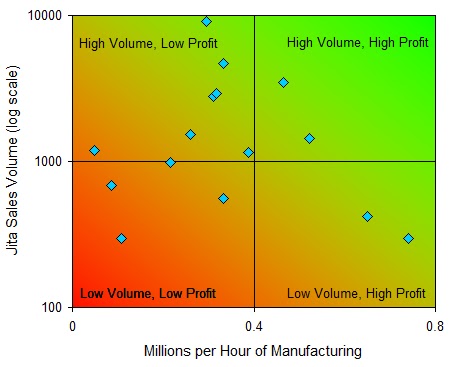Firstly, some basic data (you can click on it to expand it if you like):
Still profitable over the 4 years, and reasonably consistent. Costs have gone down in the last year but the market price for the finished product has followed that decline.
Looking in more detail at the costs (and also my predictions for how they would evolve), again firstly here's the data:
- Minerals went down as I predicted. Large market manipulation seems to be largely over for the time being (or more subtle at least) and minerals have returned to some sort of equilibrium price.
- PI went up marginally rather than down. Looks like PI reached its floor fairly quickly, faster than I thought. It has almost no impact overall but since it's the only prediction I got wrong, that's a bit annoying.
- Construction components are down. My prediction that they would continue to rise was correct in the months following June 2012, and rises continued until CCP took action on OTEC (the cause of the rises). Effectively CCP played the part of regulator. The materials to produce these components were only found in moons in certain parts of the galaxy, an area controlled mostly by one corp, creating a monopoly. As economic models predict, in a monopoly situation the price rose, until the regulator intervened, and now we have a big drop in those prices (28% drop), but not as low as the drop in...
- Datacores which fell through the floor, dropping a whopping 46%. My prediction that they would end up below the previous low of 2011 was correct but if anything too cautious.







